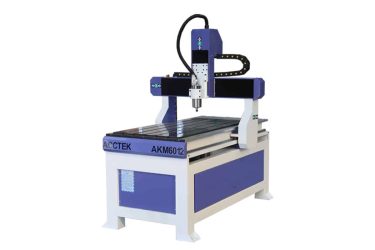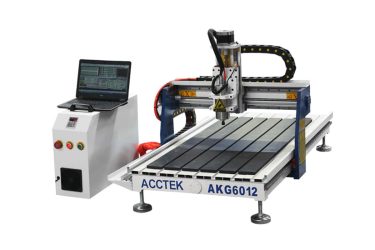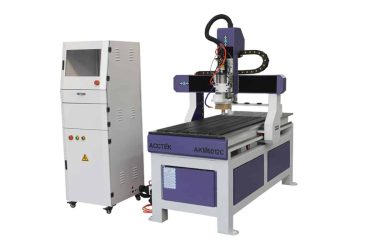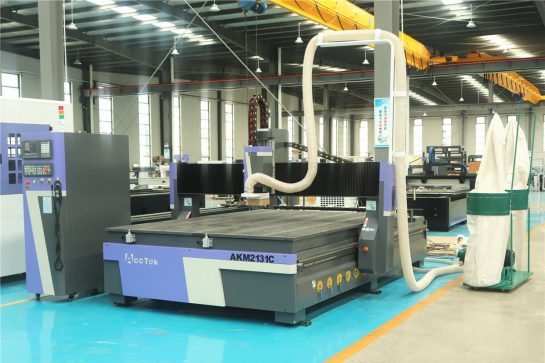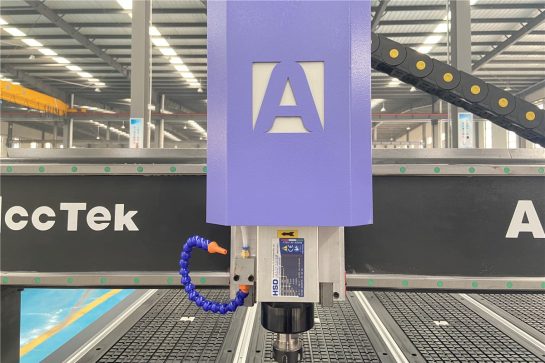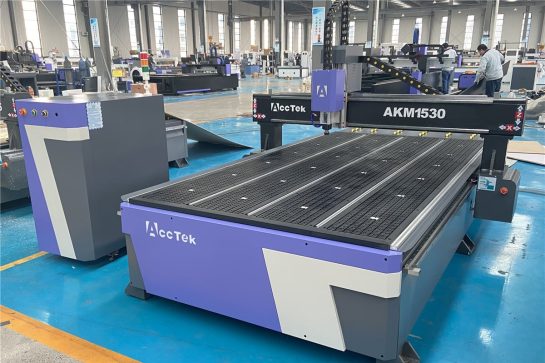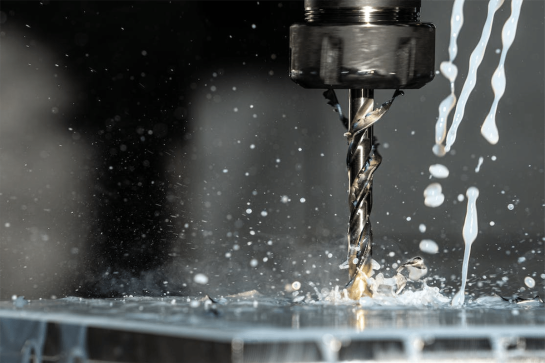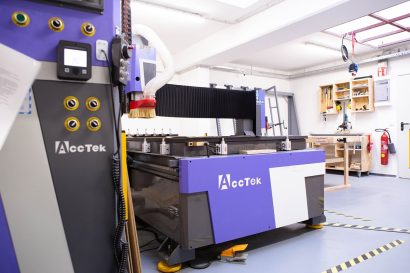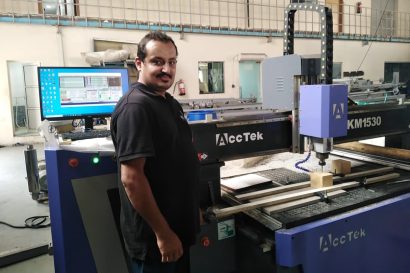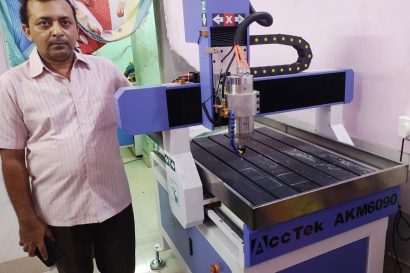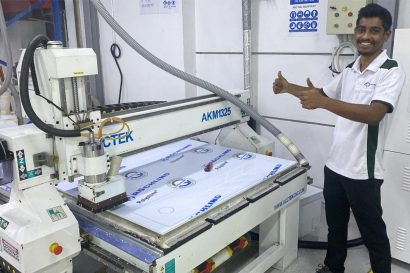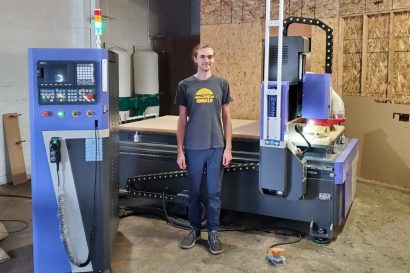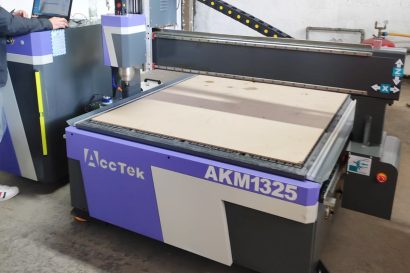6012 CNC Router
The 6012 CNC router is a multi-functional precision machining tool based on a screw mechanism. Designed for a variety of applications, the 6012 CNC router is available in a variety of styles, each designed to meet the specific needs of the computer numerical control (CNC) machining world. The distinguishing feature of this type of machine is its use of lead screws, which play a vital role in the movement and positioning of the cutting tool.
Known for its accuracy and efficiency, the 6012 CNC router is suitable for woodworking, plastic processing, and other industries that require precise and complex cuts. The diverse range of 6012 CNC routers ensures that users can choose a model that meets their specific requirements, making it suitable for both amateurs and professionals. Whether creating detailed prototypes or series production, the 6012 CNC router series provides reliable solutions for achieving high-quality results in the field of CNC machining.
Tips for Choosing a Suitable 6012 CNC Router
Navigating the world of CNC routers can be complex, and choosing the right CNC router can contribute to a successful machining project. We’ll guide you through key considerations such as application requirements, accuracy, spindle power, and more. Whether you’re a seasoned professional or new to CNC machining, our insights are designed to simplify the decision-making process, ensuring you choose the 6012 CNC router that seamlessly matches your specific needs and projects.
Application requirements
Identify the specific tasks and materials you will be working on. Different 6012 CNC routers are optimized for various applications, such as woodworking, plastic processing, or general milling machines. Choose a machine that meets your primary application needs.
Spindle power and speed
Consider spindle power and speed based on your materials and project requirements. Higher spindle power allows for efficient cutting of tougher materials, while variable speed options provide versatility for different applications. Matching spindle specifications to your project will help achieve the best results.
Accuracy requirements
Evaluate the accuracy required for your project. If you are working with complex designs or fine details, choose a CNC router that offers high precision in both positioning and cutting. Consider the machine’s repeatability and accuracy specifications.
Drive System
Evaluate the drive system of the CNC router. Common drive systems include ball screws and rack and pinion drives. Ball screw systems are known for their accuracy, while rack and pinion systems are generally faster. Choose the one that best suits your needs.
Control System
Check the control system’s user interface and compatibility with the software. A user-friendly interface and compatibility with industry-standard software significantly simplify programming and operation. Make sure the control system meets your team’s skill level.
Construction and durability
Evaluate the build quality and durability of CNC routers. The sturdy construction ensures stability during operation, minimizing vibrations that can affect accuracy. Look for a CNC router with quality materials and engineering designed to meet the needs of your production environment.
Dust and debris collection
Consider the effectiveness of dust and chip collection systems. A well-designed system not only keeps the workspace clean but also prevents debris from affecting machine components. Efficient dust and chip collection contributes to a healthier work environment and extends the life of your CNC router.
Easy to maintain
Evaluate the ease of maintenance of the CNC router. Choose a machine with removable components, clear maintenance instructions, and readily available replacement parts. An easy-to-maintain machine will minimize downtime and ensure long-term, stable performance.
Tool changing ability
Determine if your project involves using multiple tools. If so, consider a CNC router with an automatic tool changer. This feature increases productivity by reducing the need to manually change tools, allowing the machine to seamlessly switch between tools during operation.
Budget considerations
Create a budget for your CNC router purchase. Consider not only the upfront costs, but also potential long-term expenses such as maintenance, tools, and software. Find a balance between your budget constraints and the features you need to meet your production goals.
Training and documentation
Check whether the manufacturer provides comprehensive training resources and documentation. Adequate training ensures that you and your team can operate your CNC router effectively. Clear documentation aids in troubleshooting and maintenance tasks, helping to improve the overall efficiency of operations.
Brand reputation and support
Research the manufacturer’s reputation. Choose a brand with a history of producing reliable CNC routers and providing excellent customer support. Reputable brands are more likely to provide reliable machines and responsive help should any issues arise.
Tips for Choosing a Suitable 6012 CNC Router
The 6012 CNC router, like other CNC routers, is versatile and capable of cutting a variety of materials. The specific materials that a 6012 CNC router can cut depend on factors such as the spindle power, cutting speed, and the type of cutting tools used. Generally, a 6012 CNC router can cut materials including:
Wood
- Pine
- Oak
- Maple
- Plywood
- MDF
- Cedar
- Teak
Plastics
- Acrylic
- PVC
- HDPE
- LDPE
- Polycarbonate
- PET
- PU
Metal
- Stainless Steel
- Carbon Steel
- Aluminum
- Brass
- Copper
- Titanium
- Gold
Others
- Rubber
- Carbon Fiber
- Laminates
- Leather
- Glass
- Stone
- Ceramics
Application Industry

Construction Industry
The integration of CNC routers into construction workflows has ushered in a new era characterized by meticulous detailing, rapid prototyping, and improved material utilization.

Aerospace Industry
The CNC router is widely used in aerospace engineering due to its unparalleled ability to carve complex designs, manufacture complex parts, and ensure tight tolerances.

Jewelry Industry
The CNC router revolutionize the way fine jewelry is designed and made by delivering unparalleled precision and efficiency and producing intricate designs with meticulous attention to detail.

Stone Carving Industry
The integration of CNC routers into the stone carving industry is not only revolutionizing the way craftsmen carve, it is also redefining the boundaries of artistic possibilities in this ancient practice.
Blog
How to Reduce the Impact of Workpiece Adhesion on CNC Router Cutting Quality
This article delves into practical strategies for mitigating the impact of workpiece adhesion on CNC router cutting quality, to improve the performance and reliability of CNC router operations.
Read More
Addressing Environmental Concerns in CNC Router Waste Disposal: A Comprehensive Guide
In this article, we delve into the considerations for the correct disposal of waste materials from CNC router operations, aiming to tackle the environmental challenges posed by CNC waste.
Read More
Guide to Optimizing CNC Router Parameters for Diverse Materials
This article provides a systematic parameter optimization method for CNC routers cutting different materials, aiming to provide users with the necessary knowledge to achieve excellent processing quality.
Read More
Understanding the Perils of Spindle Runout in CNC Routers
This article delves into the causes of spindle runout and strategies for mitigating its effects, aiming to provide you with the knowledge to optimize CNC router performance.
Read More
Mastering CNC Router Worktables: A Comprehensive Guide
This article delves into the CNC router types, operating methods, maintenance, and customization options, providing you with the knowledge to optimize your CNC router settings for superior results.
Read More
CNC Router Bits: Complete Buyer’s Guide
From understanding the different types of CNC router bits to deciphering the nuances of materials and coatings, this guide provides the essential reference for finding the right bit for your ...
Read More
Frequently Asked Questions
What is a 6012 CNC router?
The 6012 CNC router is a precision machining tool designed for a range of cutting and engraving applications. The machine operates on a screw drive system, providing precision and versatility on a variety of materials. The “6012” designation encompasses a class of CNC routers, each tailored for specific tasks in industries such as woodworking, plastic processing, and manufacturing.
Known for their reliability, these CNC routers have a sturdy structure that ensures stability during operation. Spindle power and speed options provide flexibility for different projects, including complex designs and fine details. The 6012 CNC router features an advanced control system, user-friendly interface, and compatibility with industry-standard software, making it suitable for both small workshops and large industrial environments. Whether making fine wood products or precision metal parts, the 6012 CNC router combines efficiency and precision to meet the needs of different manufacturing applications.
How much is a 6012 CNC router?
The cost of a 6012 CNC router can vary significantly based on its specifications, features, and additional accessories. Entry-level models, providing basic functionality for hobbyists and small workshops, typically range from $3000 to $3500. These machines offer a cost-effective solution for those looking to explore CNC machining without extensive features.
For more advanced users requiring additional capabilities, an Automatic Tool Changer (ATC) can be a valuable upgrade. CNC routers with ATC functionality, allowing for automatic tool changes during operation, generally fall in the range of $8000.
The inclusion of a rotary axis, suitable for tasks like cylindrical or 3D carving, introduces further cost considerations. The 6012 CNC routers with rotary axes can range from $3500 to $10,000 or more, depending on precision, compatibility, and additional features.
It’s crucial to note that these price ranges provide a general overview, and actual costs may vary based on the manufacturer, specific model, and any customization options selected. Additionally, shipping, taxes, and potential accessories or software upgrades can contribute to the overall investment. As such, individuals considering a 6012 CNC router should carefully evaluate their specific requirements and budget to make an informed purchasing decision. You can contact us to get accurate machine information and quotation.
What factors affect the machining speed of the 6012 CNC router?
The processing speed of the 6012 CNC router may be affected by a variety of factors. Understanding these factors can help optimize performance. The following are the key factors that affect processing speed:
- Spindle Speed: The spindle’s rotational speed (measured in revolutions per minute, or RPM) has a significant impact on machining speed. Higher spindle speeds are generally associated with faster cuts, but the optimal speed depends on the material and tool being used.
- Feed Rate: Feed rate is the speed at which the cutting tool moves through the material. Usually measured in inches or millimeters per minute. Properly adjusting the feed speed according to the material and tool will affect the processing efficiency.
- Material Type And Hardness: Different materials have different hardness levels, affecting how quickly the CNC router can cut them. Softer materials like wood allow for faster cutting speeds compared to harder materials like metal.
- Tool Selection: The choice of cutting tool, including its type, size, and sharpness, affects machining speed. Using the right tool for a specific material and task ensures efficient cutting and longer tool life.
- Depth of Cut: The depth to which a cutting tool penetrates the material, called the depth of cut, affects the load on the tool and overall machining speed. Shallower cuts allow for faster speeds without compromising stability.
- Tool Path Optimization: Effective tool path planning and optimization can increase machining speed. Advanced CAM (computer-aided manufacturing) software can generate tool paths that minimize unnecessary movement, thereby reducing machining time.
- Acceleration And Deceleration: The acceleration and deceleration capabilities of a CNC router motor affect how quickly it can change direction or speed. High acceleration and deceleration rates help speed overall processing.
- Machine Rigidity And Stability: The rigidity and stability of the CNC router frame and components affect the ability to maintain precise cuts at higher speeds. Stable machines minimize vibration and ensure consistent performance.
- Cooling And Lubrication: Proper cooling and lubrication systems help manage the heat generated during machining. The efficient system prevents overheating and reduces tool wear, helping to maintain processing speeds.
- Operator Skills And Programming: Operator skills and CNC program efficiency contribute to overall machining speed. Skilled operators can optimize tool paths and make real-time adjustments to increase efficiency.
What kind of work is suitable for the 6012 CNC Router?
The 6012 CNC router is a versatile machining tool suitable for a wide range of applications across different industries. Some common types of work that are well-suited for the 6012 CNC router include:
- Woodworking: Cutting and carving wood for furniture, cabinetry, decorative pieces, and intricate designs.
- Sign Making: Engraving and cutting materials like wood, plastic, or acrylic for creating signs, logos, and lettering.
- Prototyping: Rapid prototyping of parts and components for product development in various industries.
- Plastics Fabrication: Cutting and shaping plastics for custom products, displays, or packaging.
- Foam Cutting: Precision cutting of foam materials for packaging, insulation, or artistic projects.
- Educational Projects: Supporting educational activities in schools and workshops for teaching CNC machining and design.
- Mold Making: Producing molds for casting materials such as resin, plaster, or silicone.
- Cabinet Making: Precision cutting and shaping of components for cabinet and furniture construction.
- Plaque and Trophy Engraving: Engraving on various materials for plaques, trophies, and awards.
- Custom Millwork: Crafting custom millwork for architectural details, trim, and specialty components.
- Circuit Board Prototyping: Precision milling for creating prototype circuit boards and electronic components.
What is the best vacuum pump power of the 6012 CNC Router?
The vacuum pump power required for a CNC router, including the 6012 CNC router, depends on various factors such as the size of the machine’s bed, the type of material being machined, and the specific vacuum hold-down system in use.
In general, a 2.2kW vacuum pump is suitable for smaller to mid-sized CNC routers, including those with a 6012 working area. However, it’s crucial to ensure that the vacuum pump’s capacity matches the size of the CNC router bed and the material being processed. Insufficient vacuum power may result in inadequate hold-down force, affecting the stability of the material during machining.
If you would like to determine the vacuum pump power requirements for a specific 6012 CNC router model, you can contact us directly. AccTek CNC engineers can guide the appropriate vacuum pump power for your machine based on the machine’s design and intended application.

